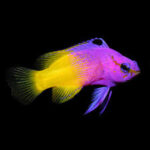The Dragon and Its Connection to Stars and Celestial Bodies in Chinese Astronomy

The dragon, a central symbol in Chinese culture, is often associated with power, wisdom, and auspiciousness. It is an emblem that transcends mythological tales, imperial regalia, and cultural art, appearing in almost every facet of Chinese life. One of the most fascinating and profound connections of the dragon in Chinese culture is its relationship with the stars and celestial bodies. In Chinese astronomy, the dragon is not only seen as a mythical creature but also as an integral part of the cosmos, linked with the stars, constellations, and the overall structure of the heavens. This article explores the connection between the dragon and celestial bodies in Chinese astronomy, examining its symbolism, astrological associations, and cultural significance in understanding the cosmos.
The Dragon in Chinese Culture: A Symbol of Power and Protection
In Chinese tradition, the dragon is not the fearsome beast found in Western folklore but a benevolent and auspicious symbol. The dragon is considered a creature of immense strength, wisdom, and grace. It is also associated with water, rain, and fertility, as well as with celestial powers. The Chinese dragon is traditionally depicted as a long, serpentine creature with antler-like horns, a scaly body, and a mane similar to that of a lion. It is often shown with a pearl or orb, which symbolizes its control over the elements and its connection to cosmic forces.
The dragon is also seen as a symbol of the emperor, representing the emperor’s divine right to rule. In fact, the emperor was often referred to as the “Son of Heaven,” and the dragon was believed to be the physical manifestation of the emperor’s authority on Earth. Its connection to the heavens made it a potent symbol of celestial and cosmic forces.
The Dragon in Chinese Astronomy: Celestial Representation
The study of the stars and the heavens has long been an important part of Chinese culture. Chinese astronomy is one of the oldest in the world, with the earliest records dating back over 2,000 years. Chinese astronomers developed a complex system of celestial mapping, which divided the sky into various constellations and patterns. The dragon, as a celestial symbol, plays a vital role in this system, often representing the connection between the earth and the heavens, and the forces that governed the universe.
In ancient Chinese astronomy, the sky was divided into two primary sections: the celestial court, associated with the emperor’s rule and the heavens, and the earthly court, associated with human life and the natural world. The dragon was thought to represent the spirit of the celestial realm, as well as the interaction between the heavens and the Earth. It was believed that dragons resided in the heavens, where they had control over weather patterns and the movement of celestial bodies.
The Azure Dragon: One of the Four Symbolic Beasts
In Chinese cosmology, the Azure Dragon (Qinglong 青龙) is one of the four great mythological beasts known as the Four Symbols, which represent different cardinal directions and their associated cosmic forces. The Azure Dragon represents the east, and is a guardian spirit that embodies the forces of spring, vitality, and new beginnings. It is often associated with the element of wood and is believed to be the protector of the celestial realm and the direction of life. The Azure Dragon has strong ties to the starry sky, particularly the eastern part of the sky, which was seen as a source of divine protection and positive energy.
The other three beasts of the Four Symbols include the Vermilion Bird of the south (representing summer and fire), the White Tiger of the west (representing autumn and metal), and the Black Tortoise of the north (representing winter and water). Together, these four symbols formed the foundation of Chinese cosmic beliefs, with the Azure Dragon standing as the central figure, governing the spring and the eastern sky. The importance of the Azure Dragon in Chinese cosmology connects it directly to the flow of energy in the universe, guiding the movement of celestial bodies and influencing the natural world.
The Dragon and the Stars: Celestial and Astrological Associations
Chinese star charts are rooted in the belief that the position of the stars and their movement across the sky can influence human affairs. The relationship between the dragon and the stars is most vividly portrayed in the Dragon’s Gate, which is linked with the mythological story of the carp transforming into a dragon after swimming through the Dragon Gate waterfall. This tale reflects the belief that the stars, like the carp, can undergo a transformation into something greater, such as a dragon. The Dragon’s Gate is located in the eastern part of the sky, reinforcing the Azure Dragon’s symbolic association with the eastern heavens.
One of the most significant astronomical constellations connected with the dragon is the Vermilion Dragon, also called the Dragon Star (Tianlong). The Vermilion Dragon is a prominent figure in Chinese celestial maps and is linked to various stars that form the pattern of a dragon. It is traditionally seen as a part of the Azure Dragon constellation, which spans a large portion of the eastern sky. The stars within the dragon’s path were believed to have particular astrological significance, affecting various aspects of human life, including health, relationships, and prosperity.
The Dragon Star in Chinese astronomy is typically composed of stars found in the constellation of the Eastern Quadrant, which includes Alpha, Beta, and Gamma Draco. In the broader picture, the dragon also has connections with other prominent constellations, such as the Big Dipper, or Northern Dipper (also known as the Seven Stars of the Great Bear). The Big Dipper holds an important place in Chinese astronomy as it is considered a celestial representation of the Emperor’s authority, and its movement across the sky is closely linked to the cycles of nature and the heavens. The connection between the dragon and these celestial bodies reflects the belief that the dragon is not just a terrestrial symbol but also a cosmic force that rules over the universe.
The Dragon and Its Role in Celestial Events
In Chinese astrology, celestial events such as eclipses, comets, and meteor showers are often associated with the actions of the dragon. The dragon is believed to control the movement of the stars and the planets, and its presence in the sky is seen as a harbinger of change or important events. Eclipses, for example, were often seen as the dragon swallowing the sun or moon, and were thus interpreted as significant omens. A solar eclipse might be seen as the dragon coming to the aid of the emperor, symbolizing the need for a strong ruler during times of darkness. Similarly, lunar eclipses were believed to signify the cosmic alignment of the dragon with the moon, a powerful celestial event that held deep meaning in both astronomy and astrology.
The dragon also plays a role in astrological charts, where it is seen as an indicator of fortune, health, and success. In traditional Chinese astrology, each year is represented by one of the twelve animals of the zodiac, but the dragon is considered the most auspicious and powerful sign. People born in the Year of the Dragon are thought to have qualities of strength, leadership, and wisdom. The dragon’s role in astrology mirrors its celestial connection, with its influence seen as positive and life-affirming.
The Dragon and the Emperor: A Symbol of Celestial Authority
The emperor’s association with the dragon is deeply rooted in the idea that the ruler is a direct representative of the heavens on Earth. This concept extends to Chinese astronomy, where the emperor was seen as a living embodiment of the dragon, linking the celestial and earthly realms. In Chinese imperial ceremonies, the emperor would often perform rituals to honor the dragon, particularly during astronomical events or when auspicious alignments of the stars occurred.
For instance, during important celestial events such as eclipses or planetary alignments, the emperor would conduct rituals to ensure that the celestial forces were in harmony with the Earth. The emperor’s actions were thought to influence the balance of the universe and the welfare of the nation. The dragon, as a celestial symbol, was invoked in these ceremonies to symbolize the emperor’s divine right to rule and his role as a mediator between the heavens and the Earth.
Conclusion
The dragon’s connection to stars and celestial bodies in Chinese astronomy is profound and multifaceted. As a symbol of divine power, protection, and cosmic authority, the dragon bridges the gap between the heavens and the Earth, guiding the movement of stars, planets, and other celestial bodies. Its representation in the Azure Dragon, the Dragon’s Gate, and celestial constellations reflects its central role in Chinese cosmology, where it is revered not only as a mythical creature but also as a cosmic force. Whether influencing astrological charts, marking celestial events, or symbolizing imperial authority, the dragon remains a powerful and enduring symbol of the celestial world, continuing to shape the cultural and spiritual landscape of China today. Through its connections with the stars and the heavens, the dragon embodies the unity of the cosmos, the earthly realm, and the divine forces that govern them.

